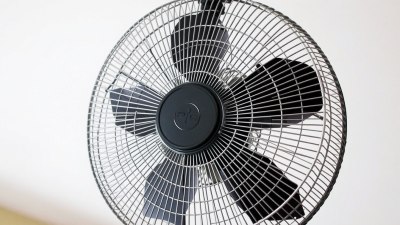How to Break Up With Your Seasonal Depression (With Help From the Sun)
Discover effective strategies to lighten your mood and combat seasonal depression using sunlight.

This image was created with the assistance of Freepik
Seasonal depression, often referred to as Seasonal Affective Disorder (SAD), is a type of depression that usually occurs during the fall and winter months when sunlight exposure decreases. Many people experience feelings of sadness, lethargy, and a lack of interest in activities they normally enjoy during these months. However, the good news is that there are effective ways to combat this kind of depression, with sunlight being a crucial ally. Here are strategies to help you break up with your seasonal depression and embrace the warmth of the sun.
Understanding Seasonal Affective Disorder
Before diving into the solutions, it's essential to understand what seasonal depression entails. SAD affects millions of people worldwide, triggering symptoms that can range from mild to debilitating. Common symptoms include fatigue, changes in sleep patterns and appetite, difficulty concentrating, and feelings of hopelessness.
The primary cause of SAD is believed to be a lack of natural sunlight, which can lead to disruptions in our body's internal clock, affecting hormone levels such as serotonin and melatonin. These changes can significantly alter mood and emotion, making it harder for individuals to maintain a positive outlook during the darker months.
Embrace Sunlight with Open Arms
One of the most effective ways to combat SAD is to make the most of the natural sunlight available to you. Sunlight is a powerful mood enhancer due to its ability to increase serotonin levels in the brain. Even on cloudy days, natural light can still positively impact your mood. Here are several ways to embrace sunlight:
1. Take Advantage of Morning Sun
Make it a habit to step outside for at least 15-30 minutes each morning. Morning sunlight not only helps regulate your circadian rhythm but also boosts serotonin levels, setting a positive tone for the day ahead. If you can't go outside, sit by windows with ample light to soak in those rays.
2. Get Outdoors During Daylight Hours
Make it a point to spend time outdoors during daylight hours, especially when the sun is out. Engage in activities like walking, jogging, or simply having lunch in a park to maximize your exposure to sunshine. The physical activity combined with sunlight exposure can have powerful effects on your mood and energy levels.
3. Arrange Your Living Space
Optimize the natural light in your home. Open curtains and blinds to let in as much light as possible during the day. Consider rearranging furniture to create well-lit areas where you can engage in activities like reading or working. A brighter space can significantly uplift your spirits.
4. Utilize Full-Spectrum Light Therapy
If natural sunlight is scarce, consider using a light therapy box designed to mimic natural sunlight. These therapy boxes can provide the additional light exposure needed to combat symptoms of SAD. Aim for about 20-30 minutes of light therapy in the morning for optimal benefits. Consult with a healthcare provider to ensure you’re using it effectively.
5. Get Moving
Physical activity is incredibly beneficial for battling seasonal depression. Regular exercise can increase serotonin levels, boost energy, and improve mood. Whether it's a brisk walk in the sun, a dance class, or a home workout, find ways to move your body. Try to combine exercise with sunlight exposure for maximum effect.
6. Incorporate Mindfulness and Relaxation Techniques
While sunlight is vital, taking care of your mental health is equally important. Incorporate mindfulness practices like meditation, yoga, or gentle stretching into your routine. These activities help you connect with your body and mind, promoting relaxation and reducing feelings of stress and anxiety. Consider doing these practices outdoors to merge relaxation with sunlight exposure.
7. Stay Connected
Isolation can worsen the symptoms of seasonal depression. Make an effort to stay connected with friends and family. Plan outdoor gatherings, enjoy coffee in the sun, or go for walks together. Social interaction combined with sunlight can create a powerful antidote to feelings of loneliness and sadness.
8. Focus on Nutrition
While sunlight therapy is beneficial, don’t forget about the impact of nutrition on your mood. Eating a balanced diet rich in omega-3 fatty acids, whole grains, fruits, and vegetables can help regulate mood and energy levels. Foods high in Vitamin D are particularly important during the fall and winter months when sunlight exposure is limited. Consider fatty fish, fortified dairy products, and mushrooms as part of your diet.
9. Seek Professional Help
If your symptoms persist despite your best efforts, don’t hesitate to seek professional help. A therapist or counselor can provide support and help tailor strategies to your situation. Medication may be an option for some individuals, so discussing this with a healthcare provider can help you determine the best course of action.
10. Create a Sunlight Routine
Establishing a daily routine that incorporates time outdoors in natural light is key to breaking up with seasonal depression. Make sunlight exposure a non-negotiable part of your schedule. Whether it's reading your favorite book outside, enjoying your morning coffee on the patio, or going for an afternoon walk, consistency is essential. Aim to prioritize these moments and treat them as vital components of your self-care routine.
Breaking up with seasonal depression is doable, especially with the help of the sun. By embracing sunlight and making adjustments to your daily life, you can significantly alleviate symptoms and improve your overall mood. Remember that you are not alone in this journey—reach out for support when you need it. Make it a goal to engage with the outdoors more, nourish your body, connect with others, and practice self-care. In doing so, you’ll find that the darker months can become a bit brighter, enhancing your overall well-being.











